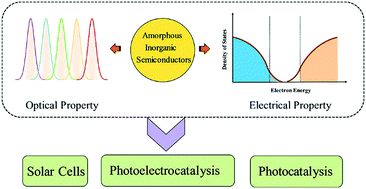Amorphous inorganic semiconductors for the development of solar cell, photoelectrocatalytic and photocatalytic applications
Abstract
Amorphous inorganic semiconductors have attracted growing interest due to their unique electrical and optical properties that arise from their intrinsic disordered structure and thermodynamic metastability. Recently, amorphous inorganic semiconductors have been applied in a variety of new technologies, including solar cells, photoelectrocatalysis, and photocatalysis. It has been reported that amorphous phases can improve both efficiency and stability in these applications. While these phenomena are well established, their mechanisms have long remained unclear. This review first introduces the general background of amorphous inorganic semiconductor properties and synthesis. Then, the recent successes and current challenges of amorphous inorganic semiconductor-based materials for applications in solar cells, photoelectrocatalysis, and photocatalysis are addressed. In particular, we discuss the mechanisms behind the remarkable performances of amorphous inorganic semiconductors in these fields. Finally, we provide insightful perspectives into further developments for applications of amorphous inorganic semiconductors.



 Please wait while we load your content...
Please wait while we load your content...
